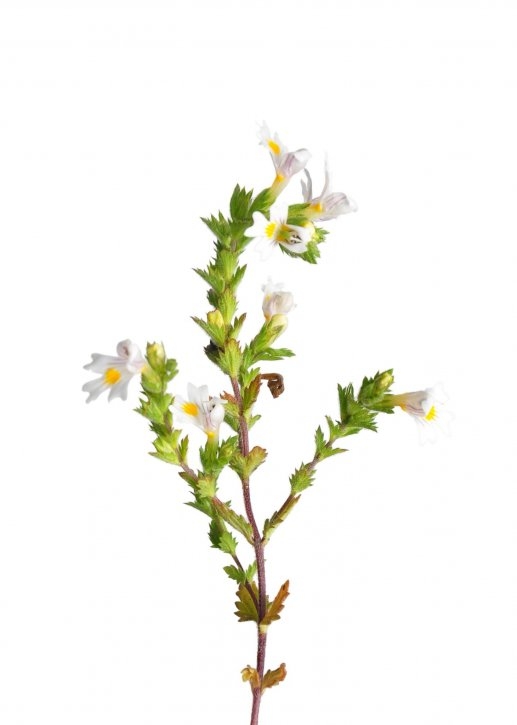Herbaceous, branched plant, up to 30 cm tall. It lives parasitizing the roots of other plants in thickets, mountain meadows and in cleared forests. Its leaves are sessile, oval and deeply toothed. The flowers are arranged in small, small, whitish-yellow clusters.
Aerial sumidad.
Active principles
Pregnancy and lactation.
No special precautions at recommended doses.
None have been described.
At recommended doses no side effects are expected.
-.Monografía de la SEFIT (Sociedad Española de Fitoterapia).
-.Fitoterapia Aplicada. J.B. Peris, G. Stübing, B. Vanaclocha. M. I. C. O. F. Valencia.
-.European Medicines Agency (EMA) - Committee on Herbal Medicinal Products (HMPC). Assessment report on Euphrasia officinalis L. and Euphrasia rostkoviana Hayne, herba. London: EMA. Doc. Ref.: EMA/HMPC/246799/2009. Adopted: 16 September 2010.
-.Stoss M, Michels C, Peter E, Beutke R, Gorter RW. Prospective cohort trial of Euphrasia single-dose eye drops in conjunctivitis. J Altern Complement Med. 2000; 6 (6): 499-508
-.Paduch R, Woźniak A, Niedziela P, Rejdak R. Assessment of eyebright (Euphrasia officinalis L.) extract activity in relation to human corneal cells using in vitro tests. Balkan Med J. 2014; 31 (1): 29-36.
